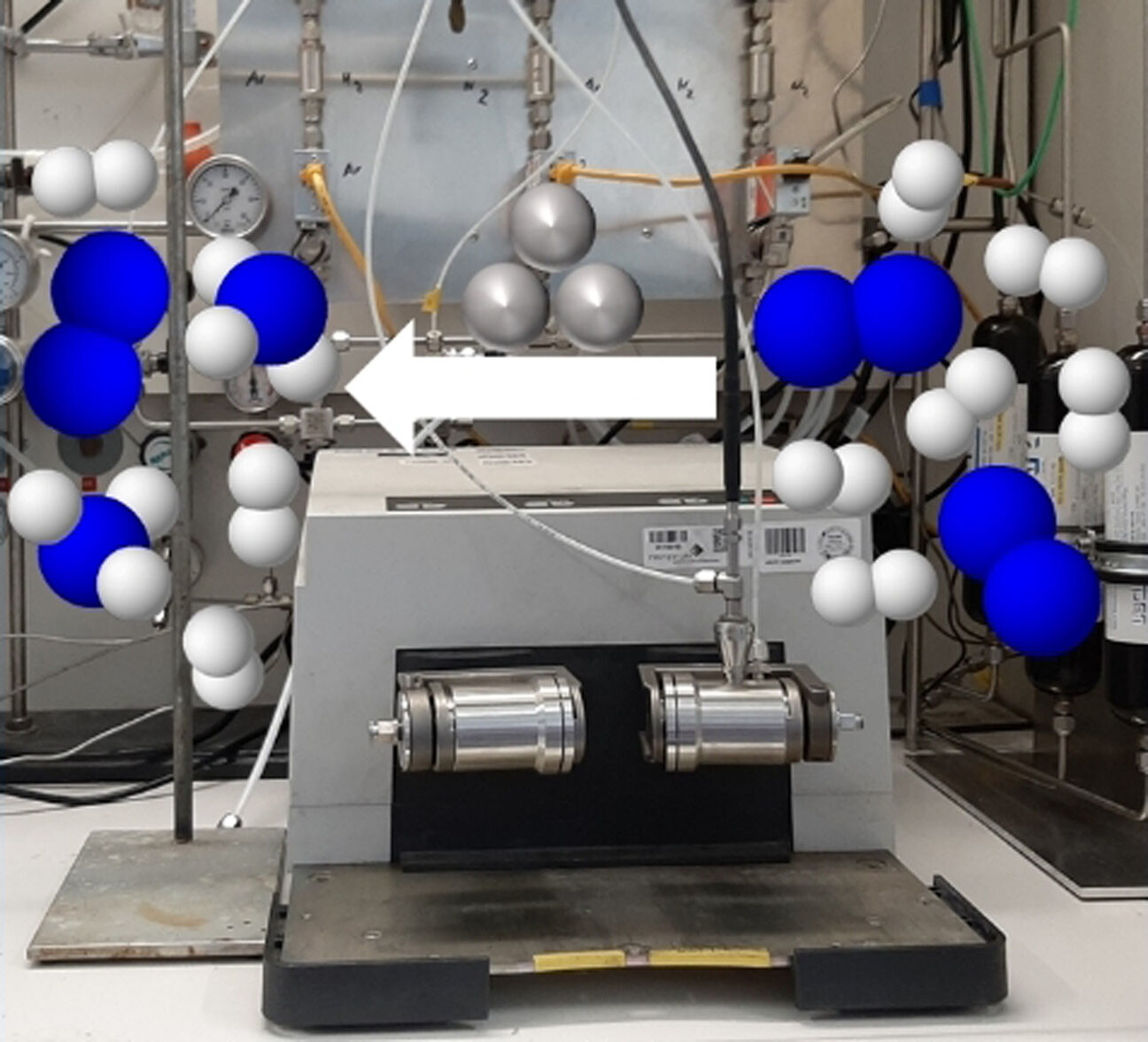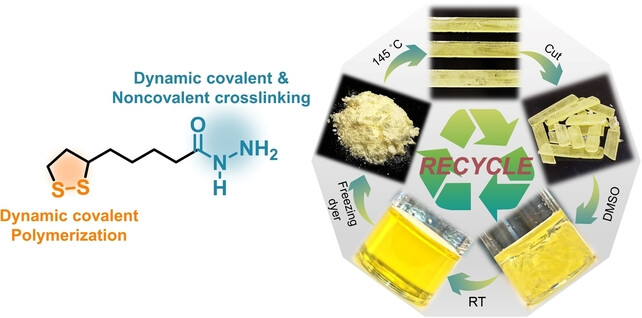Journal list menu
Export Citations
Download PDFs
Table of Contents
From Stable PH-Ylides to α-Carbanionic Phosphines as Ligands for Zwitterionic Catalysts
- First Published: 29 May 2022
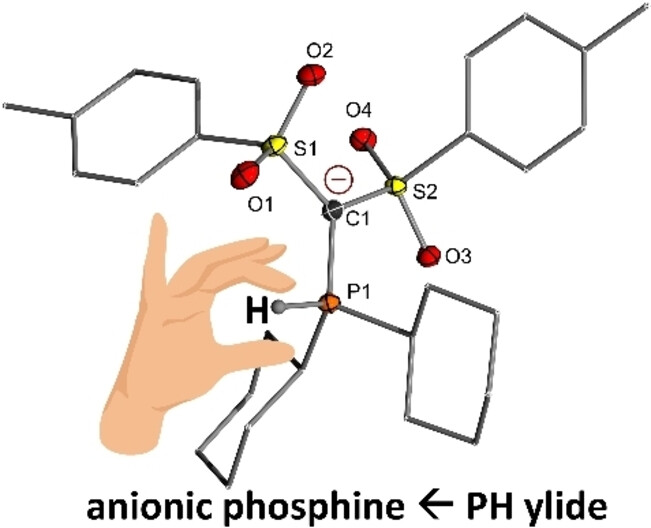
PH ylides such as H2C=PH3 are considerably higher in energy than their corresponding phosphines H3C−PH2. Using bis(sulfonyl)methyl substituents, the first PH ylides stable at ambient conditions could be isolated in solution and in the solid state. They are ideal precursors to carbanionic phosphines with exclusive phosphine reactivity and thus to highly electron-rich phosphines.
Self-Assembled Fluorescent Block Copolymer Micelles with Responsive Emission
- First Published: 07 February 2022

The encapsulation of Schiff base-like zinc(II) complexes into micelles derived from polystyrene-block-poly(4-vinylpyridine) diblock copolymers that offer coordination sites was investigated. Incorporation and ligation results in strongly emissive micelles with enhanced quantum yields and thermal stability compared to the neat complex in pyridine. The responsivity towards medium and acidity was utilized to design a turn-on emission sensor material upon micelle formation.
Bioactive Ion-Based Switchable Supercapacitors
- First Published: 19 October 2022
Structure and Bonding in Amorphous Red Phosphorus
- First Published: 14 March 2023
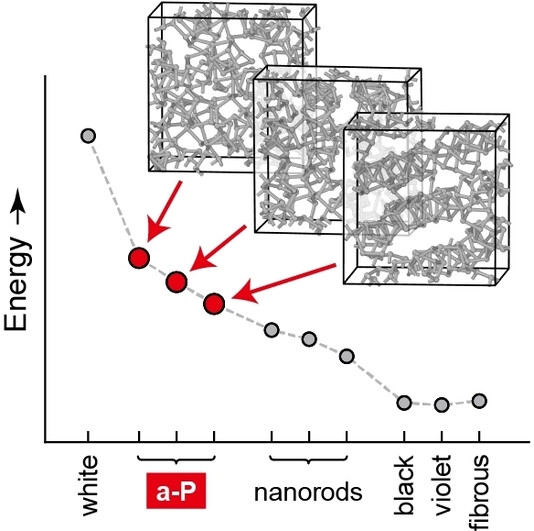
Amorphous red phosphorus (a-P) can be described on the atomic scale by combining emerging machine-learning-based and dispersion-corrected DFT approaches. The a-P models reported here complete the first-principles stability range of the phosphorus allotropes, and they allow for new insight into chemical bonding and electronic states.
A Redox-Active Heterobimetallic N-Heterocyclic Carbene Based on a Bis(imino)pyrazine Ligand Scaffold
- First Published: 16 July 2020
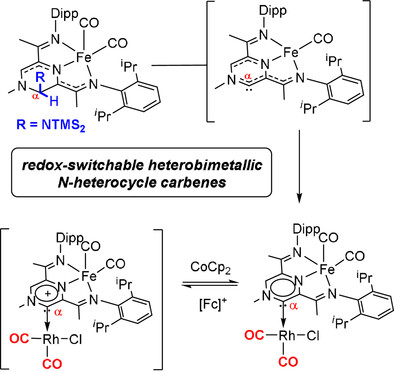
Symbiosis: A novel redox-switchable N-heterocyclic carbene architecture based on pyrazine-diimine systems is presented. We demonstrate its ambiphilicity in the reversible activation of alcohols and amines. This scaffold is capable of ligating two metals simultaneously, and the resulting heterobimetallic complexes can be reversibly oxidised and reduced.
Nanoscale Hybrid Amorphous/Graphitic Carbon as Key Towards Next-Generation Carbon-Based Oxidative Dehydrogenation Catalysts
- First Published: 26 January 2021

An amorphous/graphitic hybrid material is synthesized by growing nanoscale graphite crystallites in a non-nano polymer-derived carbon by catalytic graphitization. An active dehydrogenation catalyst is obtained by creating accessibility to these graphitic domains via selective oxidation. This carbon dehydrogenation catalyst offers a 10-fold increase in space-time-yield in the oxidative dehydrogenation of ethanol compared to a carbon nanotube benchmark.
High-Humidity Shaker Aging to Access Chitin and Cellulose Nanocrystals
- First Published: 25 August 2022

We report the first solvent-free pathway to access carboxylated chitin and cellulose nanocrystals with excellent mass balance. It relies on a new mechanochemical method coined high-humidity shaker aging (HHSA), involving mild grinding of the polysaccharide with ammonium persulfate followed by an aging phase under high-humidity and on a shaker plate.
Carbon Nitride Supported High-Loading Fe Single-Atom Catalyst for Activation of Peroxymonosulfate to Generate 1O2 with 100 % Selectivity
- First Published: 03 August 2021
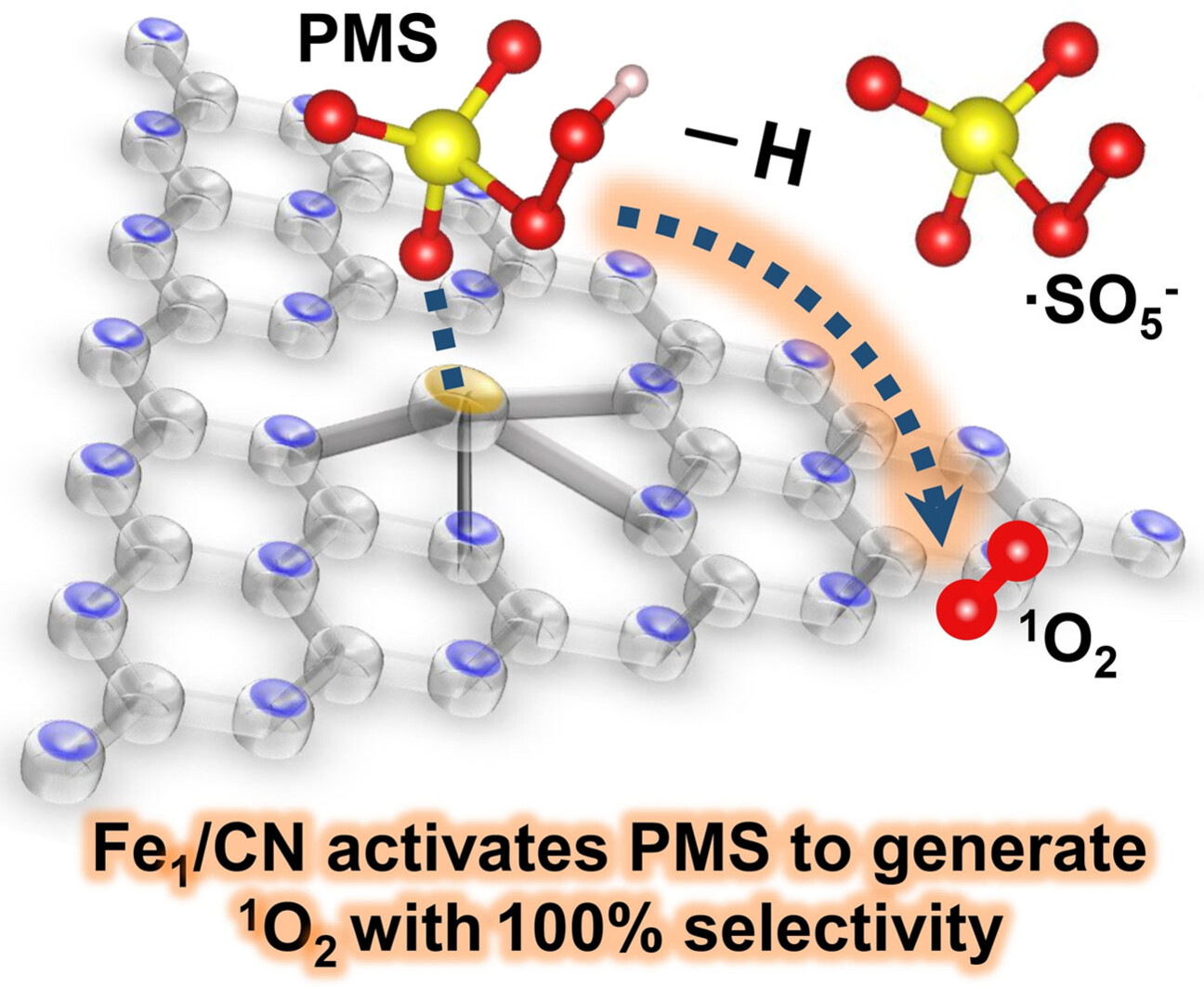
The carbon nitride supported Fe single-atom catalyst (Fe1/CN) with a Fe loading of 11.2 wt % was developed to generate 100 % 1O2 by activating peroxymonosulfate (PMS). The adsorption of terminal O and oxidation of PMS by Fe-N4 sites played the most important roles for 1O2 generation with 100 % selectivity. As a result, the Fe1/CN activated PMS system exhibited strong resistance to various factors during the degradation of organic pollutants.
Mechanocatalytic Room-Temperature Synthesis of Ammonia from Its Elements Down to Atmospheric Pressure
- First Published: 15 October 2021
Comproportionation of CO2 and Cellulose to Formate Using a Floating Semiconductor-Enzyme Photoreforming Catalyst
- First Published: 08 March 2023
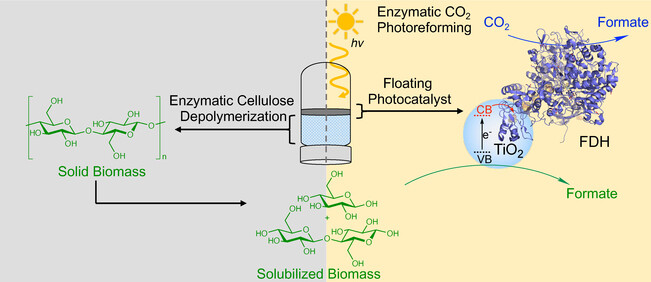
Simultaneous formate formation from CO2 reduction and cellulose oxidation is enabled by a biohybrid photocatalyst with formate dehydrogenase immobilized on titanium dioxide. The semi-artificial photocatalytic system can be further immobilized onto floating hollow glass microspheres allowing vertical solar light illumination with optimal light exposure of the photocatalyst and thereby mimicking the trajectory of real sunlight.
High-Rate CO2 Electroreduction to C2+ Products over a Copper-Copper Iodide Catalyst
- First Published: 10 April 2021

A Cu-CuI composite catalyst achieves a remarkable C2+ partial current density of 591 mA cm−2 at −1.0 V vs. RHE, substantially higher than Cu or CuI alone. It is ascribed to the presence of residual Cu+ and adsorbed iodine species which improve CO adsorption and facilitate C−C coupling during CO2 electroreduction.
Two-Dimensional Excitonic Networks Directed by DNA Templates as an Efficient Model Light-Harvesting and Energy Transfer System
- First Published: 26 October 2022
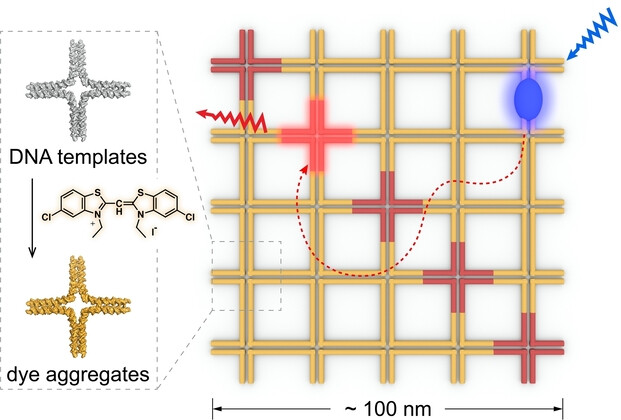
Two-dimensional excitonic networks were assembled using wireframe DNA nanostructures as templates to direct the formation of cyanine dye aggregates. The interconnected networks with programmable sizes and geometries present strongly coupled excitonic features and have been shown to mediate long-range exciton migration up to 100×100 nm for efficient photon capture and energy transfer.
Unlocking the Potential of Bio-Based Nitrogen-Rich Furanic Platforms as Biomass Synthons
- First Published: 04 May 2023
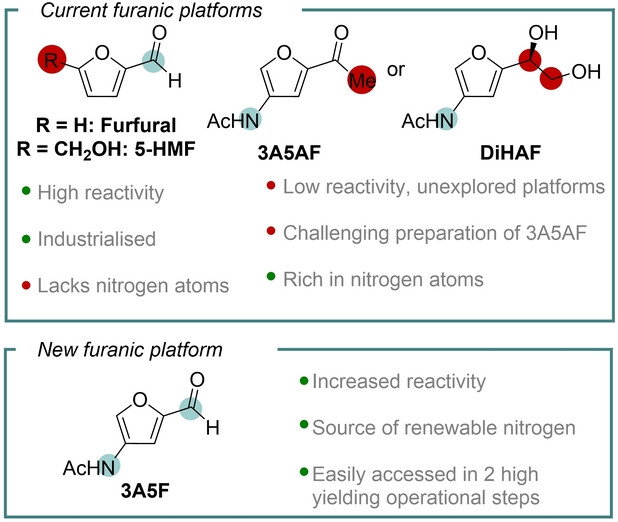
In this work we overcome current limitations of biomass furanic platforms, namely the lack of sustainable nitrogen in cellulose-based furfurals and the lack of reactivity of chitin-based ones. To this end, a tandem dehydration/oxidative cleavage of N-acetylglucosamine delivers a new nitrogen-rich furfural. We further demonstrate the utility of the new furan as a valuable monomer for synthetic chemistry and as a bioconjugation tool.
A Chemically Recyclable Crosslinked Polymer Network Enabled by Orthogonal Dynamic Covalent Chemistry
- First Published: 03 August 2022
Highly Efficient Synthesis of Poly(silylether)s: Access to Degradable Polymers from Renewable Resources
- First Published: 13 December 2021

A variety of renewable polymers has been synthesized from easily accessible biobased hydroxyaldehydes and dihydrosilanes. Using low catalyst loadings of platinum complexes, different polymer architectures were obtained, from random to alternated copolymers. The intrinsic chemical recyclability of these poly(silylether)s is also highlighted.
Biodegradable High-Density Polyethylene-like Material
- First Published: 08 December 2022
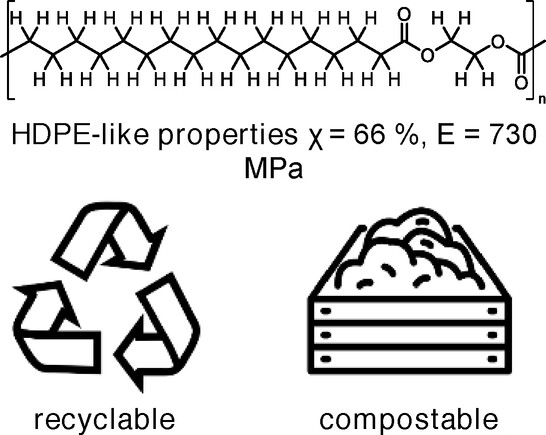
While it resembles high density polyethylene with regard to its mechanical properties and solid-state structure and has a high melting point (Tm=96 °C), the novel polyester-2,18 material at the same time fully hydrolyzes in in vitro enzymatic degradation studies and mineralizes under industrial composting conditions (ISO standard 14855-1) within two months.
Converting Non-strained γ-Valerolactone and Derivatives into Sustainable Polythioesters via Isomerization-driven Cationic Ring-Opening Polymerization of Thionolactone Intermediate
- First Published: 09 February 2023
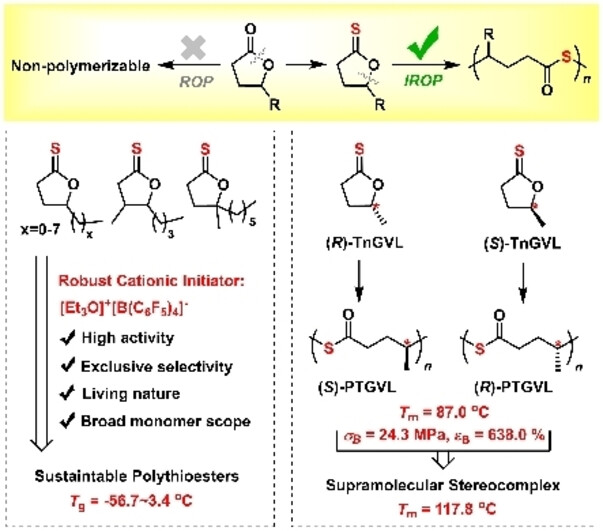
The efficient conversion of “non-polymerizable” γ-valerolactone and its derivatives is presented. The abundant but unexploited renewable feedstocks give new sustainable polythioesters with tunable materials properties through the establishment of the first isomerization-driven ring-opening polymerizations of corresponding thionolactone intermediates via the development of a new simple and robust [Et3O]+[B(C6F5)4]− cationic initiator.
Ln2(SeO3)2(SO4)(H2O)2 (Ln=Sm, Dy, Yb): A Mixed-Ligand Pathway to New Lanthanide(III) Multifunctional Materials Featuring Nonlinear Optical and Magnetic Anisotropy Properties
- First Published: 04 October 2022

A mixed-ligand gateway gives new lanthanide materials with multiple functionalities which often do not coexist. Ln2(SeO3)2(SO4)(H2O)2 materials are capable of generating coherent light through the second-harmonic generation and exhibiting magnetic anisotropy facilitated by large spin-orbit coupling. This result shares new ideas for harmonizing optical and magnetic properties in single systems at the atomic level.
Temperature-Reliable Low-Dimensional Perovskites Passivated Black-Phase CsPbI3 toward Stable and Efficient Photovoltaics
- First Published: 03 March 2022
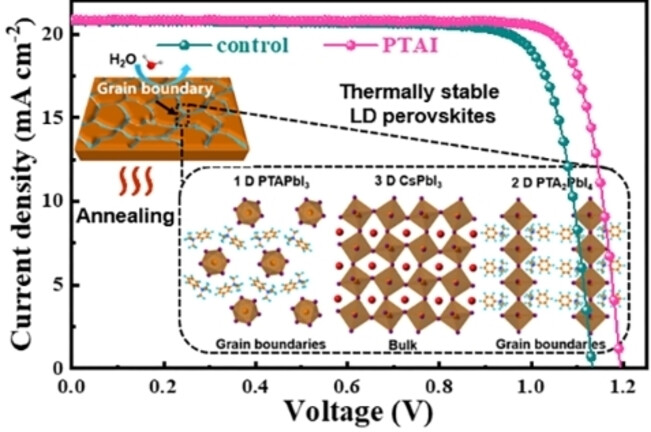
Temperature-reliable low-dimensional (LD) perovskites (1D PTAPbI3 and 2D PTA2PbI4) are demonstrated to form in situ at grain boundaries and surfaces of CsPbI3 perovskite. As-formed LD perovskites can effectively passivate the defects in CsPbI3 films and prevent moisture intrusion as well. This PTAI-based LD-decorated CsPbI3 perovskite solar cell exhibits a record efficiency of 21.0 % with enhanced stabilities.
Symmetry-Induced Singlet-Triplet Inversions in Non-Alternant Hydrocarbons
- First Published: 14 February 2023





